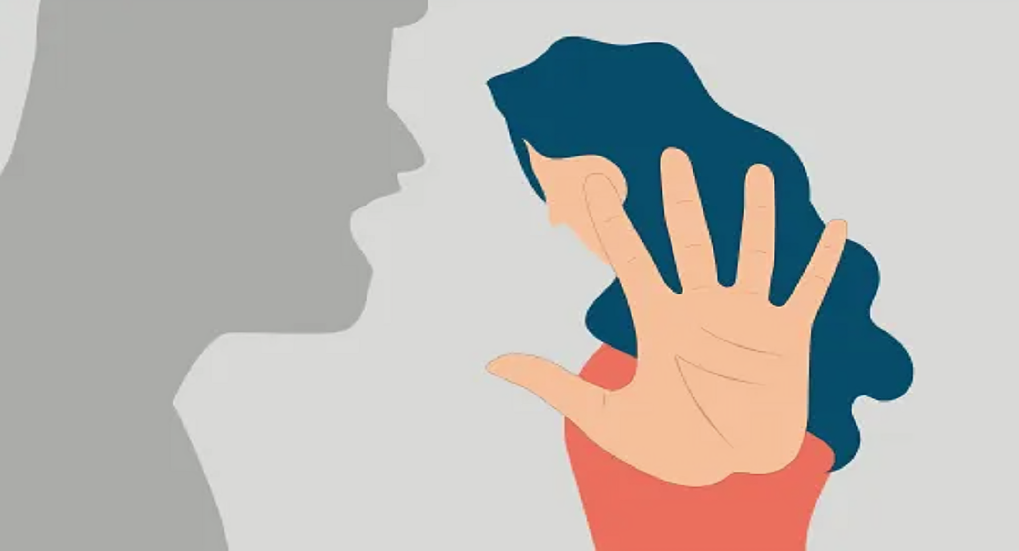Be the change: challenging silence and myths around sexual harassment and building a safer campus

The blog is written by Adv. Niyati Sharma. She holds over six years of experience in high-stakes litigation, corporate advisory, and regulatory compliance. She is a senior panel counsel for the Union of India in the Delhi High Court and represents government departments and clients in the Supreme Court of India. Her expertise spans POSH compliance, corporate and employment law and complex regulatory issues. With her passion for policy reforms and women’s empowerment in governance, she contributes legal writing, panel discussions and mentoring future legal professionals.
Let’s begin
Don’t you think that our educational institutes aren’t just meant to be a centre for getting knowledge, but also a protector of it’s talent? Educational institutions are meant to nurture and protect the minds. But these days, protection has turned into exploitation in various places. Why do you think colleges have turned into an uncomfortable and scary place? Educational Institutions have become a place where students face sexual harassment. Sexual harassment can take place by way of touch, comments, and sometimes even by inhumane acts like rape. Mostly, many students stay quiet. They are afraid of what society might say or think. Those who don’t want to stay quiet are made silent.
We can talk about the recent case at one of the reputed Medical Colleges in India. A trainee doctor was killed in the case of RG Kar Medical College. After that terrible case of sexual assault and murder, we saw protests across the nation. Most of us also started thinking that those who save our lives are also not safe. People started thinking whether the colleges are actually safe. The questions were raised regarding the rules and regulations formulated for protection against sexual harassment.
Well! Most of us said that Laws must work and not just exist. We have a special law for sexual harassment of women at their place of work. The Sexual Harassment of Women at Workplace (Prevention, Prohibition and Redressal) Act, 2013, deals with these kinds of cases. Basically, every workplace has to create an ICC, i.e. Internal Complaints Committee. This ICC at the workplace is meant to help anyone facing sexual harassment. But the thing is that many places treat it as a formality.
Recently, many colleges have started building better and safer places for everyone. But do you think it is enough? Who do you think is responsible for this? What do you think should be done by the victim? And most importantly, what can these institutions do to tackle sexual harassment?
Myth vs reality
Talking about Myths, there are many surrounding sexual harassment. Don’t you think myths hide realities about sexual harassment in learning institutions? These wrong ideas end up protecting wrongdoers and make it harder for victims to get justice.
Myth 1
These incidents take place only in isolated areas.
But actually, the truth is, it can happen anywhere. For instance, sexual harassment can be in the form of irrelevant remarks in group discussions. Assuming that there is a woman engaged in debate, and she is arguing for the motion. Seeing this, the opponents are so pissed that they called her a ‘Slut’ and made remarks like ‘Shut up!’. This is not something that is to be taken normally.
Moreover, it includes gender-centric vulgar jokes during class interactions, unrequited staring in the library, etc.
Myth 2
Most of the harassers are strangers.
This is a common belief. But the reality is different. Most of the attackers are someone who is known to the victims. Now, when I say known then this includes classmates and even faculty members.
There have been some incidents, like a PhD scholar reported a sexual harassment case against a professor who attacked her, in Sambalpur University, in 2024.
Another incident is, there was a professor in Delhi University who was ordered to take mandatory retirement by the Delhi High Court in 2023.
Why?
It is because an M.Phil. student was subjected to sexual intimidation by him. He was sending inappropriate messages to her. The disciplinary action against him was considered correct by the Court.
Myth 3
Blaming the victim.
People blame the victim instead of the harasser. For example, it is often the clothes worn and the way they act that result in these activities.
Myth 4
These assaults happen with only women.
But it is not only women but also all underprivileged groups. It includes male, transgender, and non-binary students.
The educational institutes need to recognise these facts to break the myths.
Understanding the fear of speaking out
Why do students fear confronting institutions in sexual harassment cases? What stops their voices from being heard?
There was a review published by the Asian Review of Social Sciences. There were reasons listed, which were communication challenges and breakdowns on the part of institutions. It also combined reasons with social stigma, suppressed reporting, and prolonged campus-based violence. Students fear campus-based isolation, academic/personal revenge, losing reputation, and friendships.
In 2018, 15 IIT Bombay students accused a senior-cum-mentor of sexual harassment and assault. However, delayed actions on the part of the redressal channels by the institution triggered a sense of suspicion and sent across a clear message, i.e. collective action can also be ignored.
These incidents highlight the challenges encountered by victims because of a lack of institutional accountability, fear of retribution, and the communal cost.
Role played by the institutions
It needs to be realised that encouraging silence and facts suppression empowers culprits. It can also pave the way for more serious crimes. So, it can be said that the prompt implementation of rules and policies strengthens the voices.
There are several steps that institutions can take to strengthen the victim’s voice.
Clear policies and procedures establishment
Comprehensive anti-harassment policies are required that mention all unacceptable behaviour and consequences.
Safe and supportive reporting mechanisms
A confidential and simple reporting channel is required to be created. This must have multiple reporting options, like online reporting or offline reporting and be available for everyone.
Fair and transparent investigation
A proper, impartial committee must be formed, and the staff must be trained to take complaints with empathy. The victim must be updated about every process and progress. While balancing the need for accountability, confidentiality must be maintained.
Strengthening the victim’s voice
Victim-centred support is required. It must consist of mandatory medical care, academic support and proper counselling sessions for victims. An anonymous setup must be prepared for victims that would allow them to present their story without any hesitation. Proper legal guidance must be provided.
A proper system helps students in building their confidence, as much as this increases their belief in the administration to the same level, this deters the wrongdoers.
Justice for other genders
For the protection of female students, the cornerstone is the POSH Act, which is gender specific and has created a rights-based safety net in the universities. This protection is further strengthened under the UGC Regulation 2015.
But do we have anything for male students?
Well! The question should also include the LGBTQI+ students and the students who fall outside this community umbrella. What about them?
Thanks to the constitutional frameworks like Articles 14 (Right to Equality) and 21 (Right to life and personal liberty), along with the UGC Regulations on Curbing the Menace of Ragging in Higher Educational Institutions 2009, which includes rules related to no harassment and no discrimination.
But again, what happens when these act takes a criminal turn?
Like stalking, or sexual assault, or intimidation?
Here is when the Bharatiya Nyay Sanhita 2023 plays its role, it criminalises the acts under different Sections. Sections 74, 75, and 76 for assault, Section 351 for criminal intimidation, and Section 78 for stalking.
Recent judicial and policy developments
As usual, Indian legal machinery is evolving and has resorted to resilient measures while encountering challenges against gender-oriented crimes. Different judgments by the Apex Court outline that a safe educational environment is a constitutional right.
You know, in early 2025, in a Public Interest Litigation (PIL), Abeda Salim Tadvi and Anr. v. Union of India, W.P.(C) No. 1149/2019), the Hon’ble Supreme Court of India reinforced the University Grants Commission’s (UGC) guidelines driven by consent. The Court directed trauma training for campus administrators to promote victim-centric solutions. This ruling of the Supreme Court promotes the interest of the victim and confirms that it shall be ranked over the reputation of the institution.
The 2024-2025 UGC circulars, that was emphasized under the 2025 ruling by the Supreme Court, include several things. Now it is also required to have a training program of ten hours for new students to raise awareness. The colleges are required to show information about POSH law, ICC and UGC regulations, etc, along with helpline numbers such as 181 and 112 across campus and on the website. Besides that, colleges have to share the compliance reports on the portals such as SAKSHAM and the University Activity Monitoring Portal (UAMP) to promote transparency and accountability. We can say that this case promotes the interest of victims and directs that it is important than the reputation of colleges. But the colleges should work honestly to help the students or else these compliances are just another formality.
Thus, the foundation and the execution of these reforms together will lead to the resolution and reduction of gender-based violence.
Towards a safer future
Our institutions are plagued by sexual harassment incidents. This is further fuelled by ignoring and creating an unhealthy learning environment. We do have existing laws, but why are institutions still not able to implement them properly? What is lacking?
Nothing but a strict system that supports the victim and not the myths, which often protect the offenders.
So where should they start?
It should start with implementing a non-negotiable safety measure, bringing a strict zero-tolerance policy, setting up proper internal complaint committees and training committee staff to handle delicate cases. A proper complaint system, which is available for all and unbiased, is also required.
A combined effort of students and faculty is required for upholding respect and supporting victims. The institution must focus on accountability and victim dignity over reputation.
At the same time, just setups won’t work; proper functioning of these setups is also essential, because true change would only come when awareness turns into concrete action.
Frequently asked questions (FAQs)
- How can institutions tackle online sexual harassment cases?
Along with a proper functioning complaint channel, proper digital safety training is required. Proper monitoring on online platforms can be done. Students can be trained about online boundaries through peer ambassador programs.
- How effective is the witness mediation training?
Witness Mediation training programs are mostly effective when they help participants with intervention skills, build their confidence to safely act and create a culture where everyone feels responsible for addressing and avoiding any harassment acts.
- What is the role of parents in strengthening safety on campuses?
The very first step parents should take is to make their relationship with their kids comfortable so that they are able to share what they face. Being aware of the campus policies is also essential, and standing with the victim and holding the institution accountable when required.
- How can teachers help prevent sexual harassment?
Many students see the teachers as role models, so the teachers should play that role wisely by becoming a protector. For example, Ashoka University has a Committee Against Sexual Harassment (CASH) that is its Internal Complaints Committee, and professors actively take sessions with new students to raise awareness against sexual harassment. When teachers are there to guide, there’s a huge difference in the confidence level of students. These kinds of sessions make students feel safe and comfortable in college.

